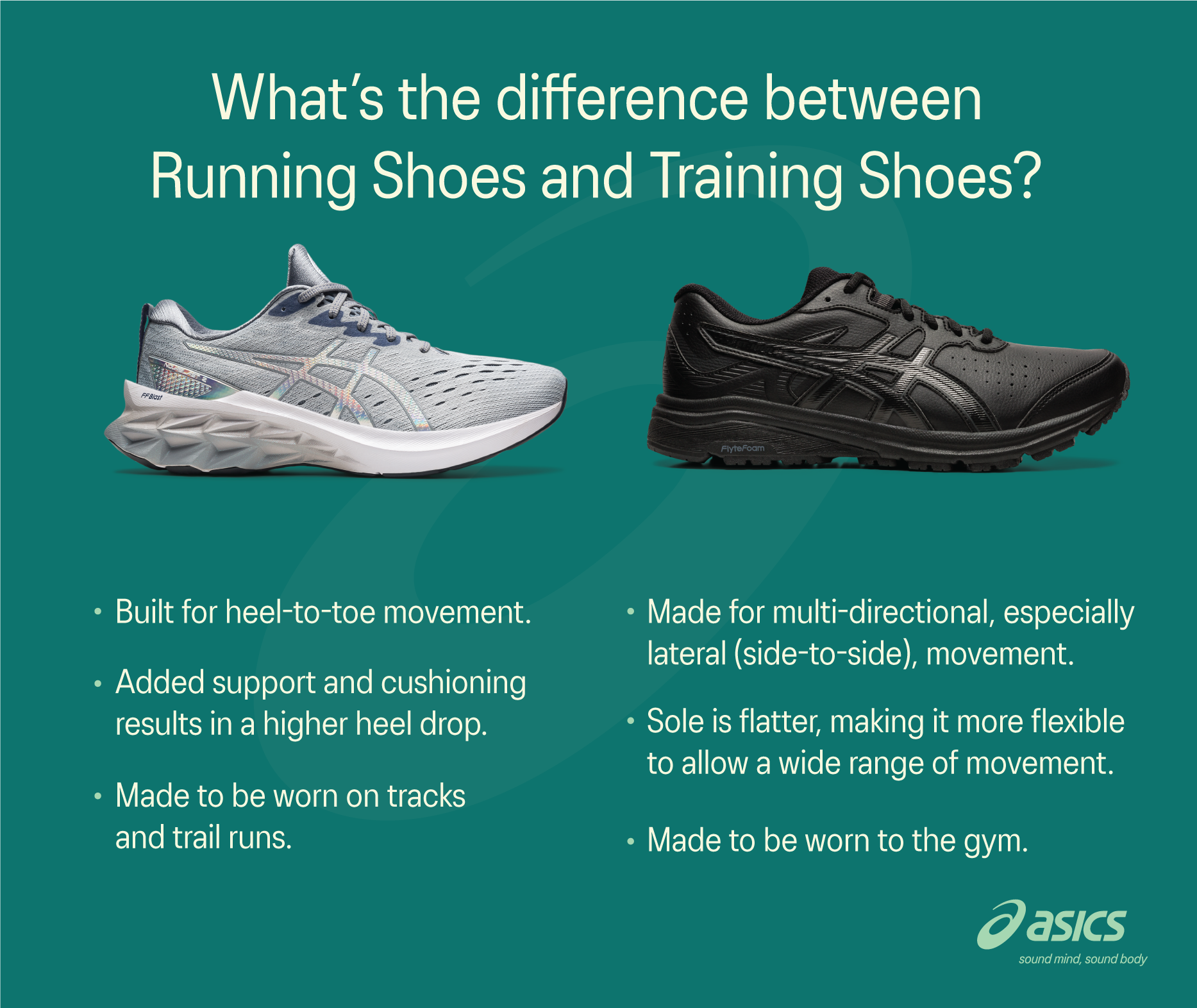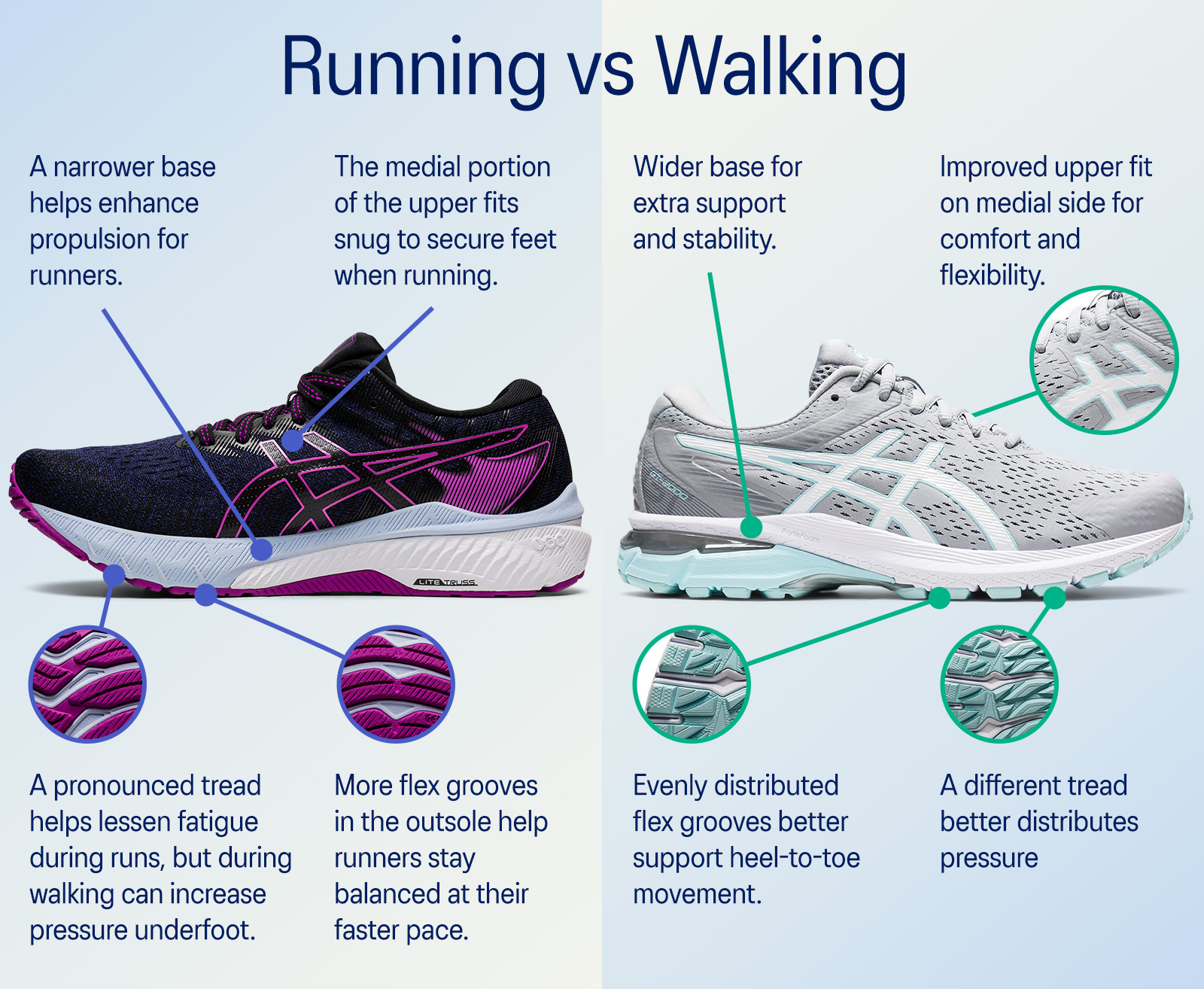Running vs Walking Shoes: Which Is Best for Your Fitness Journey?
Embarking on a fitness journey often begins with a simple step—choosing the right footwear. The debate between running vs walking shoes is more than a matter of preference; it’s a decision rooted in biomechanics, performance, and injury prevention. Whether you’re lacing up for a brisk walk or an intense run, the shoes you wear can define your experience. In this article, we’ll dissect the nuances of these two types of footwear, drawing from scientific research, expert opinions, and real-world applications to guide you toward the optimal choice for your goals.
Understanding the Fundamental Differences
At first glance, running and walking shoes might seem interchangeable, but their designs cater to distinct movement patterns. Running involves a gait cycle where both feet leave the ground simultaneously, creating higher impact forces—up to three times your body weight, according to studies from Harvard Medical School. In contrast, walking maintains constant contact with the ground, resulting in lower, more distributed pressure. This biomechanical disparity shapes everything from cushioning to flexibility. For instance, running shoes often feature advanced shock absorption in the heel and forefoot to handle repetitive landings, while walking shoes prioritize a flexible sole to support a rolling motion from heel to toe. Renowned podiatrist Dr. Ray McClanahan, in a Quora discussion, emphasizes that “misaligned footwear can lead to chronic issues like plantar fasciitis,” underscoring the need for specificity. When considering running vs walking shoes, it’s essential to recognize that one isn’t inherently superior; rather, each serves a unique purpose in enhancing comfort and safety.

Biomechanics and Shoe Design
Delving deeper into biomechanics, the human foot undergoes different stresses during running versus walking. A study published by the University of Calgary highlights that running generates a “collision force” at heel strike, necessitating shoes with enhanced cushioning and motion control. This is why many running models, like those from ASICS or Nike, incorporate gel or air units in the midsole. Conversely, walking involves a smoother, heel-to-toe transition, demanding shoes with a lower heel drop and greater flexibility to promote natural foot movement. On Wikipedia, the entry for “Running Shoes” notes that they often include features like carbon fiber plates for energy return, which are unnecessary and potentially cumbersome for walkers. Celebrity fitness trainer Jillian Michaels, in a YouTube video, advises, “If you’re walking for weight loss, opt for shoes that allow your feet to move as they would barefoot—think minimal cushioning and a wide toe box.” This alignment with natural gait patterns is crucial; choosing the wrong type can not only hinder performance but also increase injury risk. Thus, when evaluating running vs walking shoes, consider how your activity’s biomechanics interact with the shoe’s structure to either support or strain your body.
Key Features to Compare
When comparing running and walking shoes, several features stand out as critical differentiators. Cushioning, for example, is more pronounced in running shoes to dissipate high-impact forces, whereas walking shoes offer moderate cushioning focused on comfort over long distances. The heel-to-toe drop—the height difference between the heel and forefoot—is another key factor; running shoes typically have a higher drop (8-12mm) to aid in forward propulsion, while walking shoes feature a lower drop (0-4mm) for stability. Additionally, weight plays a role; running shoes are generally lighter to reduce fatigue during intense activity, as noted in reviews from Runner’s World. Durability also varies; running shoes may wear out faster due to the harsh forces involved, a point echoed in Baidu Baike’s entry on athletic footwear. From a user perspective, imagine you’re training for a marathon: you’d benefit from a shoe like the Brooks Ghost, which offers responsive cushioning. But for daily walks, a model like the Skechers Go Walk provides the flexibility needed for comfort. By examining these features objectively, you can make an informed decision in the running vs walking shoes debate, ensuring your footwear investment aligns with your fitness regimen.

Material and Construction Insights
The materials used in running and walking shoes further highlight their specialized roles. Running shoes often employ lightweight, breathable meshes and advanced foams like Adidas’ Boost or Nike’s React to maximize energy return and ventilation. In contrast, walking shoes might use more durable leather or synthetic uppers for all-day support, as seen in brands like Rockport. A Quora thread featuring insights from a materials scientist explains that “running shoe midsoles are engineered for compression resilience, while walking shoe midsoles focus on gradual deformation to ease joint stress.” This is backed by literature from MIT’s Sports Lab, which emphasizes that improper material choice can lead to overheating or blisters during extended use. Moreover, the outsole design differs; running shoes have aggressive tread patterns for traction on varied surfaces, whereas walking shoes feature smoother soles for pavement compatibility. As a consumer, you might find that investing in a high-quality pair from a reputable brand, often available at discounted prices during seasonal sales, enhances both performance and longevity. Remember, the right materials not only improve comfort but also extend the life of your shoes, making the running vs walking shoes decision a practical one for your wallet and wellness.
Practical Scenarios and User Experiences
To bring the running vs walking shoes comparison to life, let’s explore real-world scenarios. If you’re an avid runner tackling trails or roads, shoes like the Hoka One One Clifton provide the cushioning and stability needed to prevent injuries like shin splints, a common issue cited in WebMD articles. Conversely, if your routine involves walking for health, as recommended by the American Heart Association, shoes such as the New Balance 877 offer the arch support and flexibility essential for joint health. Personal testimonials from platforms like Reddit reveal that many users switch from walking to running shoes prematurely, only to experience discomfort—a mistake that underscores the importance of activity-specific footwear. For instance, a marathoner shared on Twitter how switching to dedicated running shoes improved their pace and reduced recovery time. Similarly, a walker on Instagram praised the comfort of walking shoes during long city strolls. By aligning your choice with your primary activity, you not only optimize performance but also invest in preventive care. Consider this: a well-chosen shoe can be the difference between a rewarding workout and a sidelining injury, making the running vs walking shoes evaluation a cornerstone of any fitness plan.

Expert Opinions and Scientific Backing
Turning to expert voices, the consensus among professionals reinforces the specificity of shoe selection. Dr. Casey Kerrigan, a former Harvard researcher, stated in a published interview that “walking in running shoes can alter your gait unnaturally, leading to hip and back pain.” This is supported by data from the Journal of Sports Sciences, which found that runners using appropriate footwear had a 20% lower injury rate. On the other hand, walking enthusiasts benefit from shoes that promote a natural stride, as emphasized in ASICS’ design philosophy. Celebrity endorsements, like that of Olympic runner Usain Bolt for Puma running shoes, often highlight performance enhancements, but it’s crucial to filter such claims through scientific lenses. For example, a Baidu Wenku analysis notes that while celebrity opinions can inspire, they should be weighed against peer-reviewed studies. In your journey, leverage resources like university publications or certified reviews to validate choices. Ultimately, the running vs walking shoes dilemma isn’t about trends; it’s about harnessing evidence-based design to support your body’s needs, whether you’re chasing a personal best or enjoying a leisurely walk in the park.
In summary, the choice between running and walking shoes hinges on your specific activities and physiological demands. By prioritizing features like cushioning, drop, and materials, and heeding expert advice, you can select footwear that enhances your fitness journey. Remember, the right pair not only boosts performance but also safeguards your health, making every step count toward your goals.
